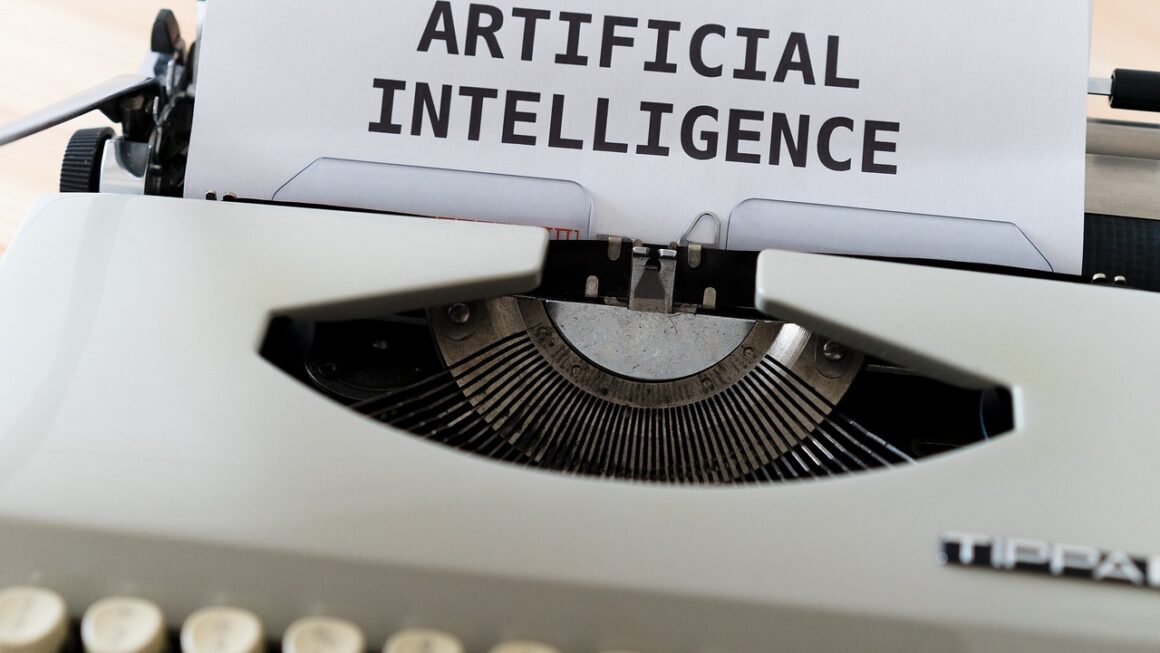Imagine a world where computers can learn, adapt, and solve complex problems much like the human brain. This isn’t science fiction; it’s the reality powered by neural networks, a core component of artificial intelligence. These sophisticated algorithms are revolutionizing industries from healthcare to finance, enabling machines to understand images, translate languages, and even predict market trends. Dive into the fascinating world of neural networks and discover how they’re reshaping our future.
What are Neural Networks?
Neural networks, at their core, are computational models inspired by the structure and function of the human brain. They’re designed to recognize patterns and relationships in data, allowing them to learn and make predictions without being explicitly programmed.
The Building Blocks: Neurons
- Neurons (Nodes): The fundamental units of a neural network. Each neuron receives input, processes it, and produces an output. Think of it like a single cell in your brain.
- Weights: Each connection between neurons has a weight associated with it. These weights determine the strength of the connection and are adjusted during the learning process. Imagine them as the synapses in your brain, strengthening or weakening based on usage.
- Activation Function: A function applied to the weighted sum of inputs in a neuron to determine its output. Common activation functions include ReLU (Rectified Linear Unit), sigmoid, and tanh. These functions introduce non-linearity, enabling the network to learn complex patterns.
Layers: Organizing the Neurons
Neural networks are organized into layers:
- Input Layer: Receives the initial data. The number of neurons in this layer corresponds to the number of features in the input data. For example, if you are inputting an image, the number of neurons may correlate with the number of pixels in the image.
- Hidden Layers: Perform complex computations on the input data. A network can have multiple hidden layers, allowing it to learn increasingly intricate patterns. The more hidden layers, the more “deep” the neural network is said to be.
- Output Layer: Produces the final prediction or classification. The number of neurons in this layer depends on the task the network is designed for. If classifying images of cats and dogs, there would be two neurons in the output layer (one for each class).
How Neural Networks Learn: Training
Training a neural network involves feeding it a large amount of data and adjusting the weights of the connections between neurons to minimize the difference between the network’s predictions and the actual values. This process is typically done using a technique called backpropagation.
- Backpropagation: An algorithm that calculates the gradient of the loss function (a measure of the network’s error) with respect to the weights. The weights are then adjusted in the opposite direction of the gradient to reduce the error. Think of it as refining the connections over time so the network produces results more accurately.
- Loss Function: Quantifies the difference between the network’s predictions and the actual values. Common loss functions include mean squared error (MSE) for regression tasks and cross-entropy for classification tasks.
- Optimization Algorithm: An algorithm that determines how to update the weights during training. Popular optimization algorithms include stochastic gradient descent (SGD), Adam, and RMSprop.
Types of Neural Networks
Neural networks come in various architectures, each designed for specific types of tasks. Understanding these different types is crucial for choosing the right model for your problem.
Feedforward Neural Networks (FFNNs)
- Description: The simplest type of neural network, where data flows in one direction from the input layer to the output layer through hidden layers.
- Use Cases: Suitable for basic classification and regression tasks.
- Example: Predicting house prices based on features like square footage, number of bedrooms, and location.
Convolutional Neural Networks (CNNs)
- Description: Specifically designed for processing images and videos. CNNs use convolutional layers to automatically learn spatial hierarchies of features.
- Use Cases: Image recognition, object detection, image segmentation.
- Example: Identifying objects in self-driving cars, diagnosing diseases from medical images, facial recognition.
- Key Concept: CNNs excel at extracting features from images through convolutional filters. They are particularly efficient at identifying patterns that are invariant to location in the image.
Recurrent Neural Networks (RNNs)
- Description: Designed to handle sequential data, such as text and time series. RNNs have recurrent connections, allowing them to maintain a “memory” of previous inputs.
- Use Cases: Natural language processing (NLP), speech recognition, machine translation, time series prediction.
- Example: Predicting the next word in a sentence, generating text, analyzing stock prices.
- Challenge: Traditional RNNs can struggle with long-range dependencies due to the vanishing gradient problem.
Long Short-Term Memory Networks (LSTMs)
- Description: A type of RNN specifically designed to address the vanishing gradient problem. LSTMs have special “memory cells” that can store information for long periods.
- Use Cases: Similar to RNNs, but particularly effective for tasks requiring long-term memory.
- Example: Machine translation, sentiment analysis, generating music.
- Enhancement: LSTMs mitigate the vanishing gradient problem of traditional RNNs, making them suitable for tasks where context spanning longer sequences is essential.
Transformers
- Description: A more recent architecture that relies on attention mechanisms to weigh the importance of different parts of the input sequence. Transformers have achieved state-of-the-art results in many NLP tasks.
- Use Cases: Machine translation, text summarization, question answering.
- Example: The GPT (Generative Pre-trained Transformer) family of models, which can generate human-quality text.
- Significance: Transformers have revolutionized NLP with their ability to parallelize computations and capture long-range dependencies effectively through attention mechanisms.
Applications of Neural Networks
Neural networks are being used across a wide range of industries, driving innovation and solving complex problems.
Healthcare
- Disease Diagnosis: Neural networks can analyze medical images (X-rays, MRIs) to detect diseases like cancer, Alzheimer’s, and heart disease with high accuracy. Studies have shown that AI-powered diagnostic tools can improve accuracy by up to 30% in certain cases.
- Personalized Medicine: By analyzing patient data (genetics, lifestyle, medical history), neural networks can predict individual responses to different treatments and develop personalized treatment plans.
- Drug Discovery: Neural networks can accelerate the drug discovery process by predicting the effectiveness and toxicity of potential drug candidates, reducing the time and cost of clinical trials.
Finance
- Fraud Detection: Neural networks can analyze transaction data to identify fraudulent activities with a high degree of accuracy, reducing financial losses for businesses and consumers.
- Algorithmic Trading: Neural networks can predict market trends and execute trades automatically, generating profits for financial institutions and individual investors.
- Credit Risk Assessment: Neural networks can assess the creditworthiness of loan applicants by analyzing various factors, such as credit history, income, and employment status.
Retail
- Recommendation Systems: Neural networks power recommendation systems that suggest products to customers based on their past purchases, browsing history, and demographic data. Amazon, for example, uses neural networks to personalize product recommendations, increasing sales and customer satisfaction.
- Inventory Management: Neural networks can predict demand for products and optimize inventory levels, reducing storage costs and preventing stockouts.
- Customer Service Chatbots: Neural networks enable chatbots to understand and respond to customer inquiries, providing 24/7 customer support.
Autonomous Vehicles
- Object Detection: Neural networks enable autonomous vehicles to detect and classify objects in their environment, such as pedestrians, other vehicles, and traffic signs.
- Lane Keeping: Neural networks help autonomous vehicles stay within their lane by analyzing camera images and adjusting the steering angle.
- Path Planning: Neural networks can plan the optimal path for autonomous vehicles to reach their destination safely and efficiently.
Building Your Own Neural Network
Creating your own neural network is more accessible than ever, thanks to powerful libraries and frameworks.
Tools and Frameworks
- TensorFlow: An open-source machine learning framework developed by Google. Known for its flexibility and scalability, TensorFlow is widely used in research and industry.
- Keras: A high-level API for building and training neural networks. Keras is designed for ease of use and rapid prototyping, making it a great choice for beginners. Keras now integrates directly with TensorFlow.
- PyTorch: An open-source machine learning framework developed by Facebook. PyTorch is known for its dynamic computation graph and ease of debugging, making it popular for research.
- Scikit-learn: A popular Python library for machine learning, including basic neural network models. Ideal for simple classification and regression tasks.
A Simple Example Using Keras
“`python
from tensorflow import keras
from tensorflow.keras import layers
# Define the model
model = keras.Sequential([
layers.Dense(64, activation=’relu’, input_shape=(784,)), # Input layer and first hidden layer
layers.Dense(10, activation=’softmax’) # Output layer (10 classes)
])
# Compile the model
model.compile(optimizer=’adam’,
loss=’categorical_crossentropy’,
metrics=[‘accuracy’])
# Load and preprocess data (e.g., MNIST dataset)
(x_train, y_train), (x_test, y_test) = keras.datasets.mnist.load_data()
x_train = x_train.reshape(60000, 784).astype(‘float32’) / 255
x_test = x_test.reshape(10000, 784).astype(‘float32’) / 255
y_train = keras.utils.to_categorical(y_train, num_classes=10)
y_test = keras.utils.to_categorical(y_test, num_classes=10)
# Train the model
model.fit(x_train, y_train, epochs=2, batch_size=32)
# Evaluate the model
loss, accuracy = model.evaluate(x_test, y_test)
print(‘Test accuracy:’, accuracy)
“`
- Explanation: This code defines a simple feedforward neural network with one hidden layer using Keras. It then compiles the model, loads the MNIST dataset (handwritten digits), preprocesses the data, trains the model, and evaluates its performance. This is a rudimentary example, but it illustrates the core principles.
Tips for Success
- Start Small: Begin with simple models and gradually increase complexity as needed.
- Data Preprocessing: Clean and preprocess your data before training. This can significantly improve the performance of your model.
- Hyperparameter Tuning: Experiment with different hyperparameters (e.g., learning rate, batch size, number of layers) to optimize your model’s performance.
- Regularization: Use regularization techniques (e.g., dropout, L1/L2 regularization) to prevent overfitting. Overfitting can occur when the model performs well on the training set but poorly on unseen data.
- Visualization: Visualize your data and model’s performance to gain insights and identify potential issues. Tools like TensorBoard can be invaluable.
Conclusion
Neural networks represent a powerful and versatile tool for solving complex problems across various domains. Understanding their fundamental principles, different architectures, and practical applications is essential for anyone looking to leverage the power of artificial intelligence. While building sophisticated models requires expertise, the accessibility of user-friendly frameworks like TensorFlow, Keras, and PyTorch empowers individuals to experiment and innovate in this rapidly evolving field. As research continues, neural networks will undoubtedly play an increasingly significant role in shaping our future.




